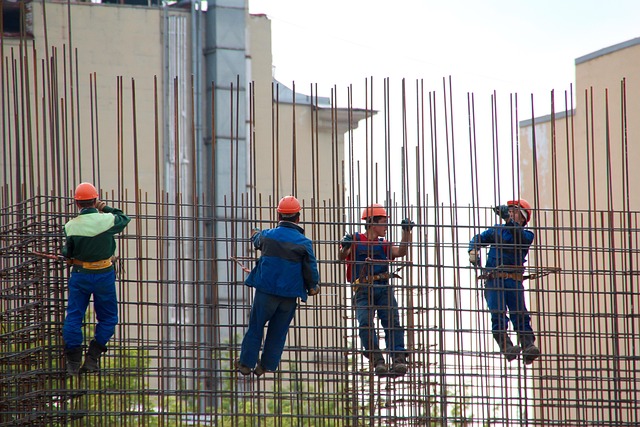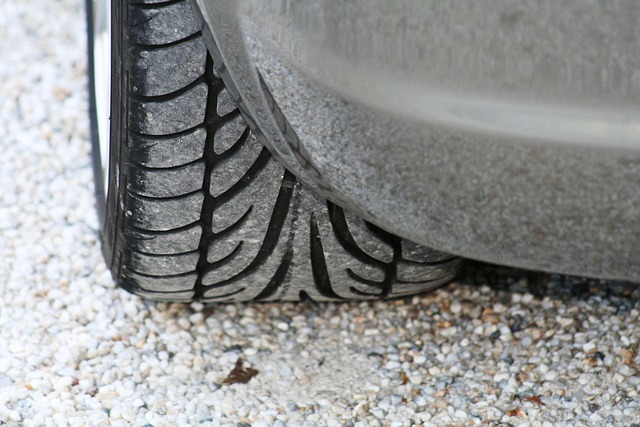Advanced Techniques for Concrete Crack Repair and Detection
Concrete structures inevitably develop cracks over time due to various factors including settling, temperature fluctuations, and load stress. Modern approaches to concrete crack repair incorporate sophisticated detection methods and innovative repair solutions that extend structural lifespan. Understanding the relationship between proper diagnosis and effective treatment is essential for maintaining the integrity and safety of concrete infrastructure.

Concrete structures are fundamental components of our built environment, providing strength and durability for everything from residential foundations to massive infrastructure projects. However, even the most well-constructed concrete elements eventually develop cracks that require attention. Modern concrete crack repair has evolved significantly, incorporating advanced detection technologies and specialized repair methodologies that ensure structural integrity while extending service life.
How Ultrasonic Testing Equipment Identifies Concrete Defects
Ultrasonic testing equipment has revolutionized the way professionals detect and assess concrete cracks before implementing repairs. This non-destructive testing method works by sending high-frequency sound waves through concrete structures and analyzing the reflected signals. The technology can detect internal voids, cracks, and other defects that aren’t visible to the naked eye.
Modern concrete ultrasonic testing devices typically include transducers that convert electrical signals into ultrasonic energy. When these sound waves encounter discontinuities within the concrete, such as cracks or voids, they reflect back to the receiver at different velocities. Specialized software then interprets these signals to create detailed maps of internal structural conditions. This allows engineers to precisely locate defects, measure their dimensions, and assess their severity before determining appropriate repair strategies.
The accuracy of ultrasonic testing equipment makes it particularly valuable for critical infrastructure assessments where understanding the full extent of damage is essential for effective repair planning. By identifying hidden structural issues early, repairs can be targeted and proportionate, saving both time and resources.
Comprehensive Repair and Corrosion Management Systems
The repair and corrosion management of reinforced concrete structures involves a systematic approach that addresses both immediate damage and underlying causes. Effective management systems typically include regular inspection schedules, condition assessment protocols, and strategic intervention plans that prioritize repairs based on structural importance and defect severity.
Corrosion of reinforcing steel represents one of the most significant threats to concrete durability. When moisture and chlorides penetrate concrete and reach the reinforcement, electrochemical reactions cause the steel to corrode and expand, creating internal pressure that results in cracking and spalling. Modern repair systems address this through multi-layer approaches:
- Removal of deteriorated concrete around corroded reinforcement
- Treatment of exposed reinforcing steel with corrosion inhibitors
- Application of specialized repair mortars with compatible properties to the original concrete
- Installation of protective systems such as waterproofing membranes or cathodic protection
These comprehensive approaches not only repair visible damage but also address the root causes of deterioration, significantly extending the service life of concrete structures. Implementing proper corrosion management strategies can prevent the recurrence of damage and reduce long-term maintenance costs.
Advancements in Ultrasonic Surface Crack Detection
Ultrasonic surface crack detection represents a significant advancement in concrete inspection technology. Unlike traditional visual inspections that can only identify visible surface defects, ultrasonic methods can characterize surface-breaking cracks with remarkable precision, measuring their depth, width, and orientation.
Surface crack detection systems typically employ specialized transducers that generate Rayleigh waves, which travel along the concrete surface and are particularly sensitive to surface-breaking defects. When these waves encounter a crack, they produce distinctive signal patterns that trained technicians can interpret to determine crack characteristics.
Recent innovations in this field include automated scanning systems that can rapidly survey large concrete surfaces while maintaining detection accuracy. These systems often incorporate imaging software that creates visual representations of detected cracks, making it easier for engineers to assess damage patterns across entire structures. The technology has proven particularly valuable for monitoring critical infrastructure such as bridges, dams, and nuclear facilities where early detection of developing cracks is essential for public safety.
Integration of Ultrasonic Crack Detection in Concrete Maintenance Programs
Incorporating ultrasonic crack detection into regular concrete maintenance programs provides facility managers and infrastructure authorities with data-driven approaches to preservation. These integrated programs typically follow a structured methodology:
- Baseline ultrasonic surveys to document existing conditions
- Regular monitoring intervals determined by structure criticality and exposure conditions
- Data analysis to identify developing trends in crack formation or growth
- Prioritized intervention strategies based on quantitative assessment results
The systematic implementation of ultrasonic detection within maintenance programs allows for the transition from reactive repair approaches to preventive strategies. By identifying developing issues before they become critical, maintenance teams can schedule repairs during planned downtime, minimize emergency interventions, and optimize resource allocation.
Organizations responsible for large concrete infrastructure portfolios have found that integrated ultrasonic monitoring programs significantly reduce lifecycle costs while improving safety outcomes. The technology provides objective data for decision-making, helping to justify repair investments and demonstrate due diligence in structural management.
Common Concrete Crack Repair Methods and Their Applications
Concrete crack repair methods vary widely depending on crack characteristics, structural requirements, and environmental conditions. Understanding the appropriate application for each repair technique is essential for successful outcomes.
| Repair Method | Appropriate Crack Types | Key Benefits | Limitations |
|---|---|---|---|
| Epoxy Injection | Structural cracks 0.05-6mm wide | Restores structural integrity, excellent bond strength | Requires specialized equipment, not suitable for active leaks |
| Polyurethane Injection | Active leaking cracks, moving joints | Flexible, water-reactive, stops active leaks | Less structural strength than epoxy |
| Surface Sealing | Hairline cracks, aesthetic repairs | Simple application, cost-effective | Limited depth penetration, primarily cosmetic |
| Routing and Sealing | Controlled movement cracks | Accommodates continued movement | Visible repair line, requires maintenance |
| Stitching | Major structural cracks | High strength reinforcement across crack | Invasive, requires drilling into sound concrete |
Prices, rates, or cost estimates mentioned in this article are based on the latest available information but may change over time. Independent research is advised before making financial decisions.
The selection of an appropriate repair method requires careful consideration of the crack’s cause, behavior (static vs. dynamic), and structural significance. For example, structural cracks that compromise load-bearing capacity typically require epoxy injection or stitching techniques, while cracks resulting from normal shrinkage might only need surface treatments if they don’t affect structural performance.
Environmental factors also influence repair method selection. Structures exposed to freeze-thaw cycles or chemical exposure may require specialized repair materials with enhanced durability properties. Similarly, underwater concrete repairs demand specific techniques and materials designed to bond and cure in submerged conditions.
Preventive Strategies for Minimizing Future Concrete Cracking
While repair technologies continue to advance, preventing concrete cracks remains the most cost-effective approach to concrete maintenance. Several strategies have proven effective in minimizing crack formation:
Proper concrete mix design stands as the foundation of crack prevention. Optimizing water-cement ratios, aggregate gradation, and admixture selection creates concrete with reduced shrinkage potential and improved resistance to environmental stressors. Additionally, adequate reinforcement design that accounts for anticipated loads and environmental conditions helps control crack width and distribution.
Construction practices significantly impact crack susceptibility. Proper formwork, adequate curing procedures, and appropriate joint placement all contribute to reduced cracking. Controlled concrete placement techniques that minimize segregation and ensure proper consolidation create more uniform structures with fewer weak points where cracks might initiate.
For existing structures, applying protective systems such as penetrating sealers or coatings can prevent moisture ingress that leads to reinforcement corrosion and subsequent cracking. Regular maintenance, including prompt repair of minor cracks before they expand, represents a crucial element of long-term crack prevention strategy.
By combining advanced detection technologies with effective repair methodologies and preventive strategies, concrete structures can maintain their integrity and functionality throughout their designed service life, ensuring both safety and economic efficiency in our built environment.




